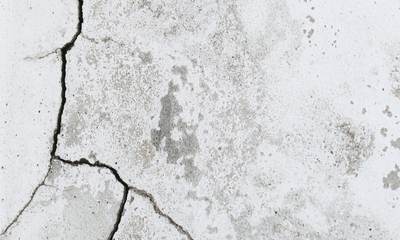A go-to guide to fixing cracks and preventing leaks in
Although they’re made of one of the strongest building materials available, concrete buildings and structures are vulnerable to damage. One of the most common culprits of concrete damage is, astonishingly, water! Yes, you read that correctly… h20 that you pour from a tap can cause grave cracks and cause a loss of integrity in hardy concrete buildings. In this go-to guide, we explain how leaks in concrete can spiral out of control and how you can quickly detect them. Read on for ideas on:
- How to repair leaks in concrete walls,
- Leaks in concrete floors,
- Leaks in concrete ceilings,
- And leaks in concrete slabs.
Got questions? Kindly contact our expert concrete repairs team on 01482 425250. We’re always happy to help!
How can water leaks damage concrete?
The structural foundations of a concrete building appear impenetrable, but they’re not. Leaks in new builds and aging structures is common. When concrete cracks, it’s easy for water to seep through and create a moist environment. This can lead to a weakening in structural integrity – especially if the volume of water is higher than the volume of concrete. Leaks in concrete can cause cracks ranging in severity, from small ones affecting the aesthetics of a building to severe ones with a detrimental impact on how long and well a building functions.
This is how leaks can cause cracked concrete:
- Breakdown of the concrete’s composition – causing crumbling, cracking, etc.,
- Bacteria in mold and mildew can pierce the concrete – causing foundational shifts or movements,
- Acidity of rainwater can cause the aggregate in concrete to degrade,
- Extremely hot or cold weather affects the temperature of the water leakage, creating a whole host of separate problems. For example, frozen water (ice) can force concrete foundations to swell up and they lose integrity as they thaw and return to normal temperature,
- Pressure from a particularly powerful leak can cause cracked concrete.
For free, emergency guidance on how to handle leaks in concrete, kindly call our expert team on 01482 425250. We’re happy to help!
Detecting leaks in concrete walls, ceilings, floors, and slabs
There are lots of other ways to detect leaks in concrete, aside from identifying cracks. Here are the signs of a potential leak:
Smells
✔️Musty smell
✔️Mold and mildew smell
See
✔️Damp or discoloured patches
✔️Dripping down walls or from the ceiling
✔️Your water bill has rocketed unexpectedly
✔️Taps and other fixtures are noticeably less powerful
✔️Misaligned doors or windows
✔️Slanting walls
Hear
✔️Audible leak (this check can be completed by your water company, though you may be able to hear water dripping)
Feel
✔️Hot spots
✔️Warping of nearby materials, for example, wood panelling
Here’s a quick checklist to use:
- Can you smell mold and mildew?
- Can you see visible damp patches?
- What about warping of surrounding materials (like wood panels)?
- Have you noticed visible cracks in the concrete?
- Can you feel warm spots on the wall, ceiling, floor, or slab?
Have you detected signs of leaks in concrete? Here’s what to do next
If you suspect a leak or notice signs of cracked concrete, the next step is to arrange for a concrete repairs expert to visit you. At CCUK, we offer a FREE feasibility study and cost analysis, so we’ll visit your site and give you an estimate quote free of charge.
Method #1: Hydrophobic and hydrophilic leak sealing
Hydrophobic and hydrophilic leak sealing is our preferred method of preventing water from coming through concrete. Both are cost-effective and long-lasting, and the majority of concrete repair contractors know how to do it.
Method #2: Crack injection systems
One of our preferred methods of sealing cracks in concrete. Epoxy crack injection is a low-cost method of repairing non-moving (or sporadically appearing) cracks in large structures and infrastructure.
Method #3: Dry or wet sprayed concrete
Dry and wet sprayed concrete is a product of choice over traditional applications like poured and hand-applied concrete. And it’s ideal for sealing cracks – from small aesthetical ones to severe compromising cracks.
#4: Waterproofing barrier systems
Waterproofing barrier systems are our preferred method of protecting concrete buildings from future leaks.
Contact us to arrange your FREE feasibility study & cost analysis today
At CCUK, we offer a FREE feasibility study and cost analysis, so we’ll visit your site and give you an estimate quote free of charge.
BOOK YOUR FREE FEASIBILITY STUDY





